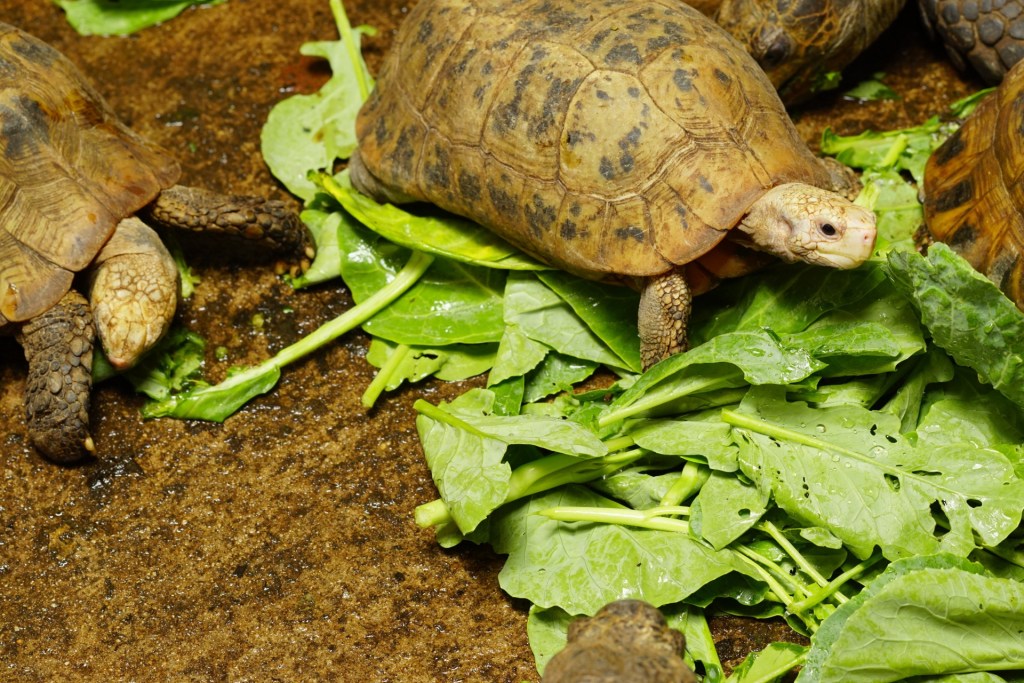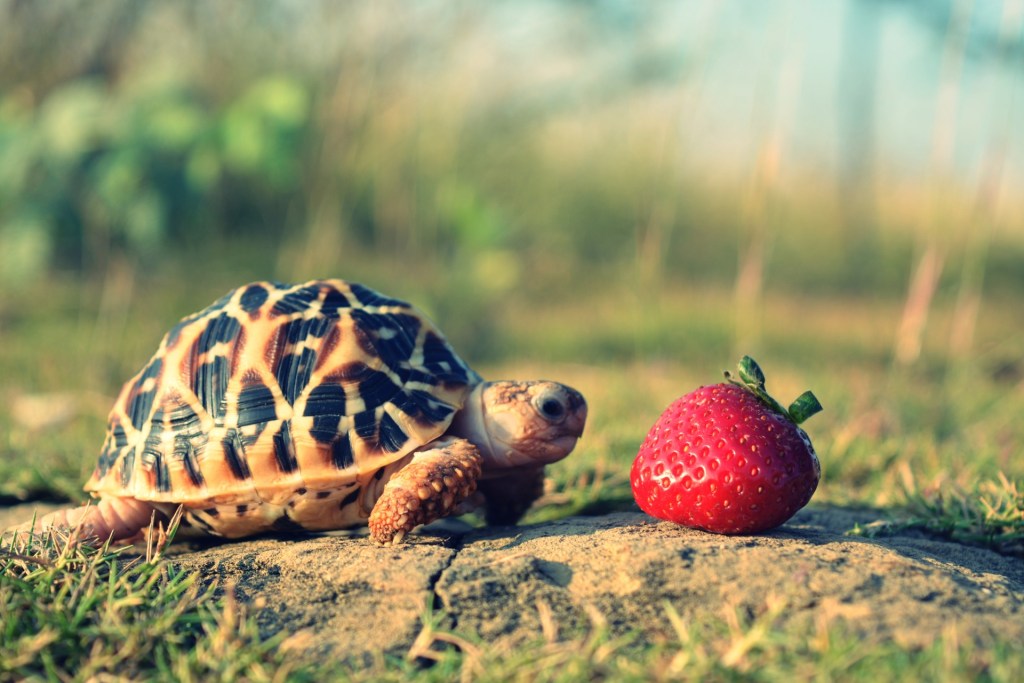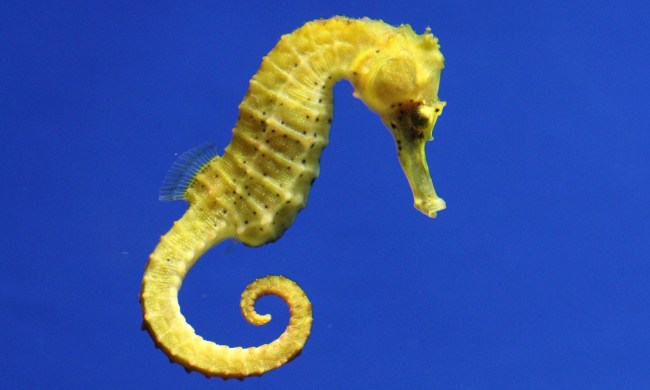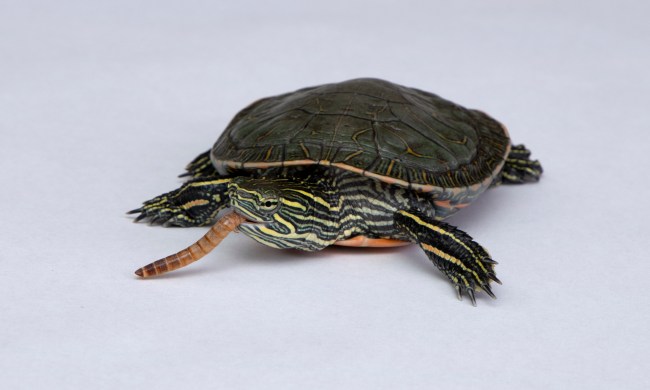Turtles are one of the most adorable and popular pets. They are a perfect first pet and can help you teach young kids about caring for an animal. Providing love, care, and food are the key things needed to be a successful pet owner. Before buying a pet turtle, you should already ask yourself what you are going to feed your new friend. Don’t worry, we have put together a quick and complete list on how to provide your turtle with the best diet and the yummiest snacks.

Different type of turtles eats different type of food
Turtles are divided into three main groups: Land, freshwater, and sea. Land turtles or tortoises can live on any continent but Antarctica. They are herbivores and only eat plants. Freshwater turtles are the biggest group with over 350 species that live in swamps, rivers, ponds and lakes around the world. They are omnivores and love to hunt. Sea turtles are also omnivores with some herbivore species. They eat crabs, jellyfish, shrimp, and seaweed. We will focus on tortoises and freshwater turtles that are the only ones you can legally own as pets.
Freshwater turtles feeding needs
Freshwater turtles are water reptiles that eat a variety of foods. Most commonly, they are fed commercially prepared pellet food that contains everything they need to thrive. But turtles are natural hunters. They get a lot of benefits out of chasing their food, and you should balance their diet with fresh fruits and veggies and live animals. Here is a list of the best foods for your turtle:
- Prey Items: Aquatic turtles love to hunt for earthworms, crickets, aquatic snails, shrimp, krill, and mealworms. Bigger adults also enjoy a bigger catch in the form of tadpoles or feeder fish. Kill possible parasites in the fish by freezing it for a few days before feeding.
- Leafy Greens: These beautiful animals have a green tooth. They can eat a variety of plants like collard greens, kale, and bok choy. You should avoid iceberg lettuce because it is not nutritious enough. Dark leaf lettuce should be given sparingly.
- Aquatic Plants: Pamper your shell friend with a natural snack and place some native aquatic plants in their habitat. Underwater varieties like anacharis, water hyacinth, fairy moss, and frogbit are popular options.
- Fresh Vegetables: Give your turtle something to munch on and serve cut-up fresh vegetables like carrots and squash. For younger and smaller turtles, shaving the veggies is a good idea to make it easier on their digestive system.
Another important consideration is to add a nutritional supplement to their feeding. This is particularly important with red-eared sliders. These turtles need to supplement their intake of calcium and vitamin D3. A cuttlebone can be a natural alternative, but we recommend a reptile multivitamin mix to be added to their food.
Feeding your turtle, a diverse diet with a variety of food sources will stimulate your pet and keep it active and in good shape. This will mimic their natural feeding habits in the wild as much as possible and give them the chance to get a workout every time they go out on a hunt. We recommend keeping commercial pellet food to a maximum of 25% of its daily diet.
Tortoises and their vegetarian lifestyle

Tortoises in captivity are mainly vegetarian and eat a combination of leafy greens, fruits, vegetables, plants and even flowers. Science has discovered that in the wild, they are omnivorous and indulge in the occasional insects, carrion, and slugs. This is the exception to the rule and happens in cases of extreme need. For pet owners, it is highly recommended that you stick to a plant-based diet to help them stay healthy and strong. This are a few of their favorite foods:
- Produce: Kale, green or yellow bell peppers, sweet potato, squash, or cauliflower
- Fruit: Berries, kiwi, bananas, oranges, and melon. Keep this under 20% of their diet
- Plants: Dandelions, alfalfa hay, aloe, basil, and chamomile are excellent options
- Pellets: Commercial food is a balanced option to supplement up to 30% of the food
Feed your turtle with the best food you can and make sure you are following all dietary guidelines given by your veterinarian. Your turtle will grow to live many years next to you and be your companion. By feeding them the right food, you eliminate digestive problems and prevent many diseases. Along with a good diet, a lot of love and special care are the ingredients it needs.


